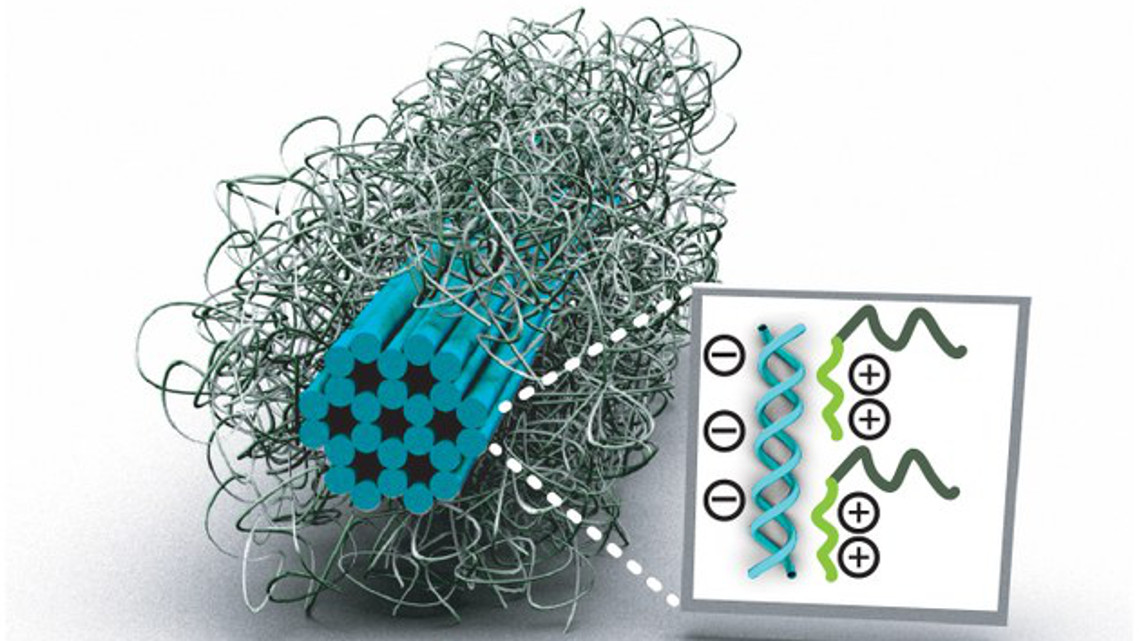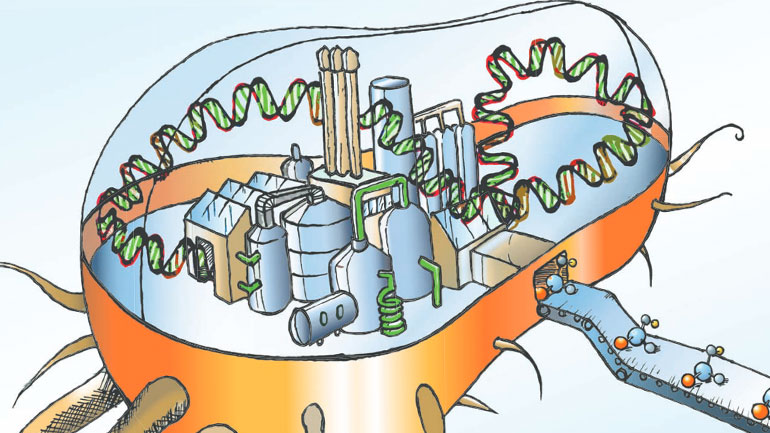A protective envelope for DNA origami
The DNA molecule offers countless structural possibilities. Dresden-based scientists developed a synthetic envelope to protect the sensitive building blocks.

Nano-technicians can construct fascinating structures with the double-stranded DNA molecule. Based on the principle of base-pairing, distinct DNA sections can be programmed to interact with other DNA segments. This method allows for the construction of molecular nanostructures. In recent years this so-called “DNA-Origami”-technique has gained more and more recognition. If the DNA is programmed accordingly, the molecule will even morph into three-dimensional nano-building blocks and nano-machines. Using this technique scientists have already fabricated miniature bricks, cogs, and even robots with flexible arms.
DNA-Origami are vulnerable to enzymes
The new DNA nanostructures have also been considered for applications in molecular biology and nanomedicine. For instance, they could be used as programmable drug carriers, diagnostic devices or to study the response of cells to precisely arranged molecules. Unfortunately, many of these DNA constructs are not very stable and are degraded quickly by the body’s own enzymes, which severely limits their biological or medical applications. Additionally, the nanostructures require a ten-fold higher salt concentration than exists in bodily fluids or cell culture buffers in order to maintain their structure and their functionality.
A simple but robust protection opens up new avenues
A team of researchers, lead by Thorsten Schmidt from the Center for Advancing Electronics Dresden and the Technische Universität Dresden, in cooperation with the University Tokyo report in an article in the journal “Angewandte Chemie” how DNA-Origami can be protected against nuclease digestion and low salt conditions.
In order to achieve that, the researchers coated several different DNA origami structures with a synthetic polymer, which consists of two segments. The first part is a short and positively charged segment, which electrostatically “glues” the polymer to the negatively charged DNA nanostructure. The second part is a long and uncharged polymer chain that covers the entire nanostructure like a coat.
The researchers could furthermore show that not only the DNA-Origami itself can be protected this way, but also complex structures that are functionalized with nanoparticles can be protected by the same mechanism.
This straightforward, cost-effective and robust route to protect DNA-based structures could therefore enable new applications across the fields of biology and nanomedicine, where un-protected DNA origami would otherwise be degraded.
jmr


